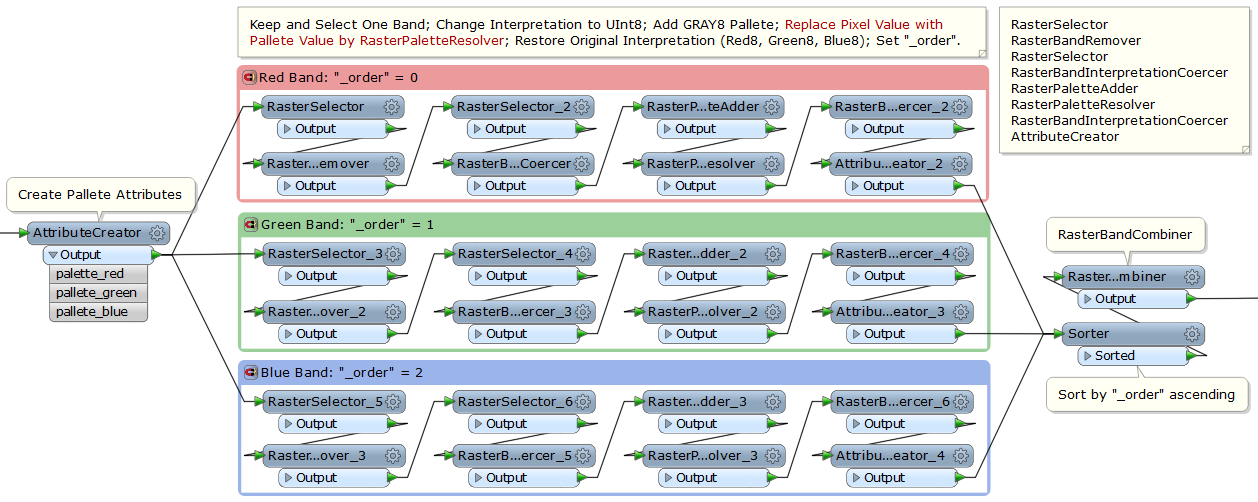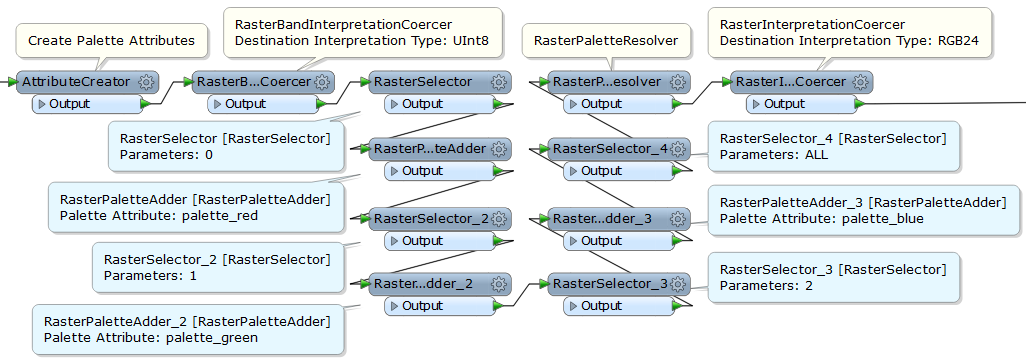Can the Raster expression evaluator or another transformer conduct a test to read the the value of a pixel and reassign it a new value. For example if i'm looking at the red channel, IF pixelvalue == 1 ? pixelvalue = 20 : (IF pixelvalue == 2) ? pixelvalue = 30 etc etc...
Maybe this needs to involve pallettes?
Best answer by takashi
View original





